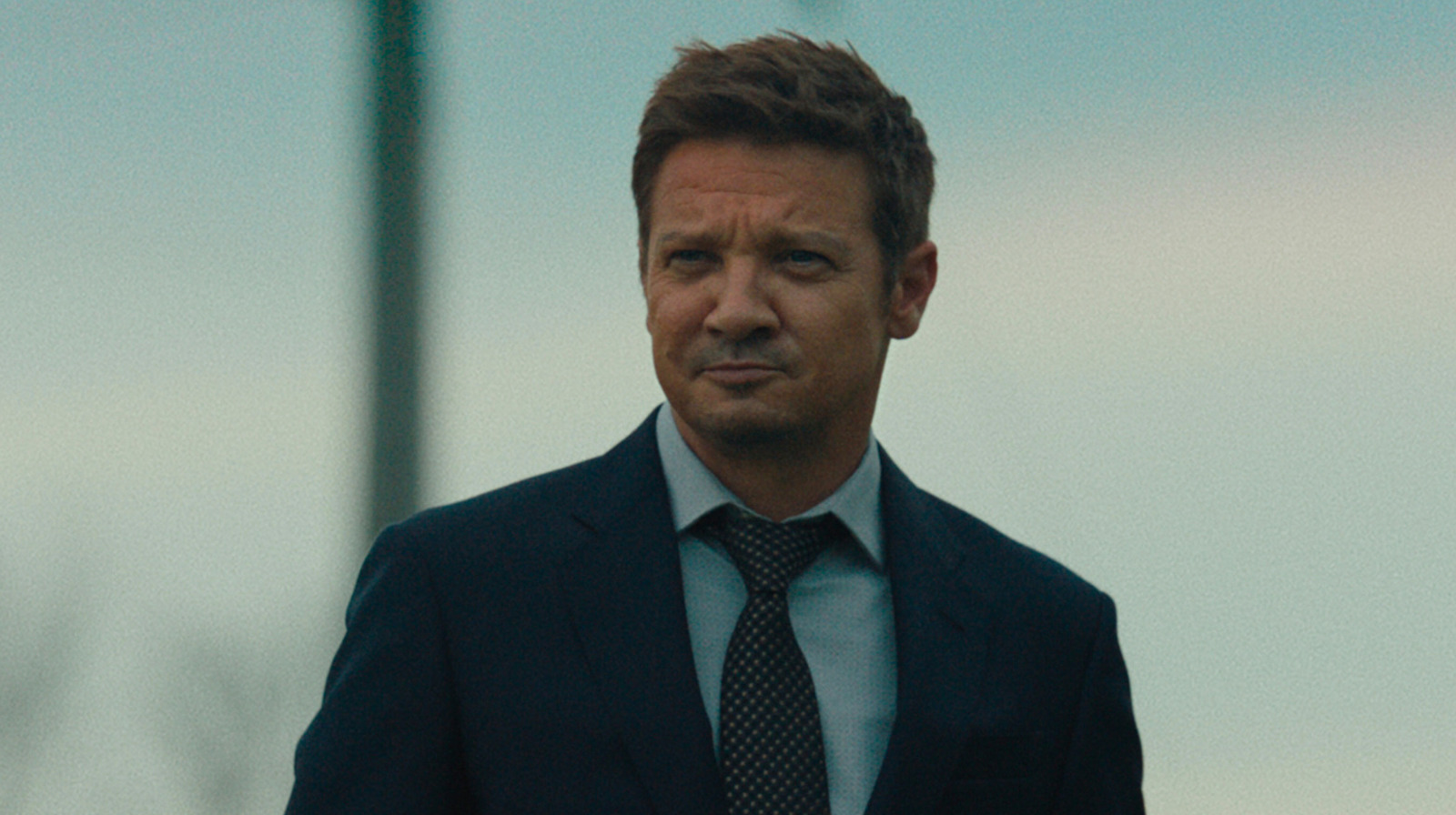
by admin | Jun 30, 2025 | TV & Beyond Articles
ever-evolving catalogue of TV shows, and his plans for “Mayor of Kingstown” should have longtime viewers feeling energized for the future of the Paramount+ show because of the careful considerations the creator has taken every step of the way.
“Mayor of Kingstown“ is a joint project headed by Taylor Sheridan and Hugh Dillon, and the second man in that sentence just had an interview with ScreenRant where he discussed their relationship as they head into the future of the show. Dillon made it clear that Sheridan has been a massive force in his life professionally and personally, guiding his development as a storyteller through mentorship and coaching all this time. As their bond developed, the scope of a project like “Mayor of Kingstown” took shape. The co-creator explained that the “Yellowstone” architect apparently has seven seasons’ worth of story to tell with Jeremy Renner and this growing franchise, which is going to perk up the ears of any fans that have been watching the first three seasons of the story on Paramount+.
Dillon began, “He’s coached me, this was the first thing he ever wrote, and he was my acting coach. He coached me on 100 episodes of TV, and we would talk about this all the time. And when we first mapped it out, he’s the king at knowing where it ends. I like intros, and I like explosive intros.” The co-creator continued, laughing, “And he has an ending for it in season 7. Whether it goes that far or that’s where we get [who knows], but he has an ending and everyone knows about it, the broad strokes. And when you talk to him, he will tell you in detail. So, our goal is to get to that season 7, because that’s as far as we can get, because that’s where he’s always had it.”
Taylor Sheridan’s seven season plan for Mayor of Kingstown signal a bright future for the series
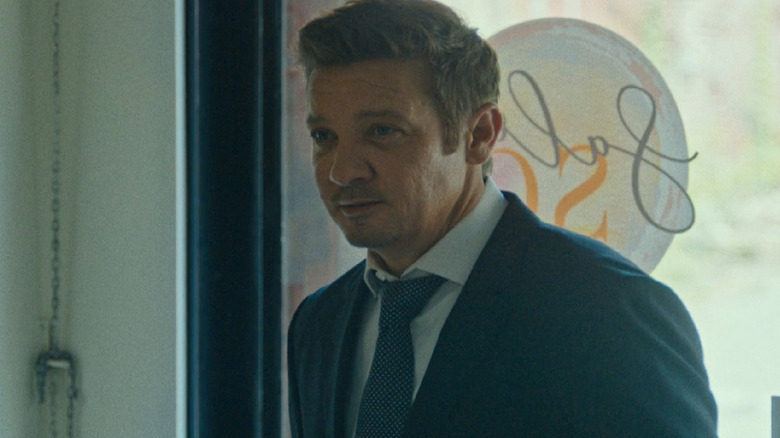
Paramount
While “Mayor of Kingstown” might not be confirmed to run seven seasons at this point, the popular show was already renewed for season 4, so it’s not outlandish to believe that the Jeremy Renner vehicle could end up getting it over the finish line. American crime thrillers have probably never been more popular than in the streaming era, and audiences don’t seem to care if the threats are real or imagined, as long as there’s a slightly complicated good guy chasing antagonists around with some explosions and gunplay thrown in for good measure! But, there’s even more reason to be optimistic about the future of the show because Jeremy Renner seems open to playing this role for as long as possible.
Renner plays Michael McLusky in the Paramount+ show; his character is the lynchpin for viewers following all the drama in Kingstown, and his presence is fairly crucial for everything in the show. As you may know, the Marvel star was involved in a horrific snowplow accident in 2023, and had a long road back to being able to walk during his recovery. However, that hasn’t stopped him from returning and filming another season of “Mayor of Kingstown,” which is an encouraging sign, and he’s already posted on Instagram that he’s excited for people to see the upcoming season. Renner told Happy Sad Confused that the past couple of years have been a literal struggle to feel good enough to get out there and complete these jobs because of all the trouble from the accident. The actor said, “I feel like I have a lot more personality on set or just in life. It’s not just 100% focus on just getting physicality, getting feeling terrible. You know, it takes a lot of mental attention to every joint. It was a lot.”
Mayor of Kingstown continues full-steam ahead toward a massive conclusion
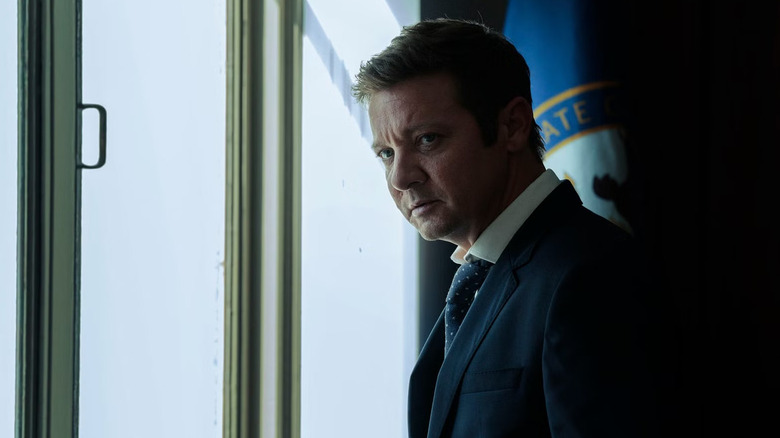
Paramount
With all of this in mind, you have to feel pretty good about Mayor of Kingstown gliding into the homestretch of its run. With season 4 already in the can and a lot of momentum behind the show from multiple corners, viewers can feel optimistic about a possible three additional seasons on Paramount+ at this rate. CBS and Paramount have a great working relationship with the creative team, even though there are some snags with power struggles that need to be noted here, they’re clearly not going to abandon “Mayor of Kingstown” in the immediate future.
One thing fans should keep an eye on as the seasons progress is if Paramount makes the decision to air “Mayor of Kingstown” over broadcast like they did for “Tulsa King,” because that would signal that the Sheridan program is getting an even bigger push than it had before. As CBS goes through even more evolution in the streaming era, they’ve tried a lot of different things to goose viewership of terrestrial TV in the ensuing years, and some things have worked, like putting out shows that were originally made for their streamer onto the good old CBS programming lineup. So, if we ever see “Mayor of Kingstown” hit the network, you’ll know that we’re definitely going to get to that seventh season, and maybe, if we’re lucky, a fun ending to a show millions of people out there love.
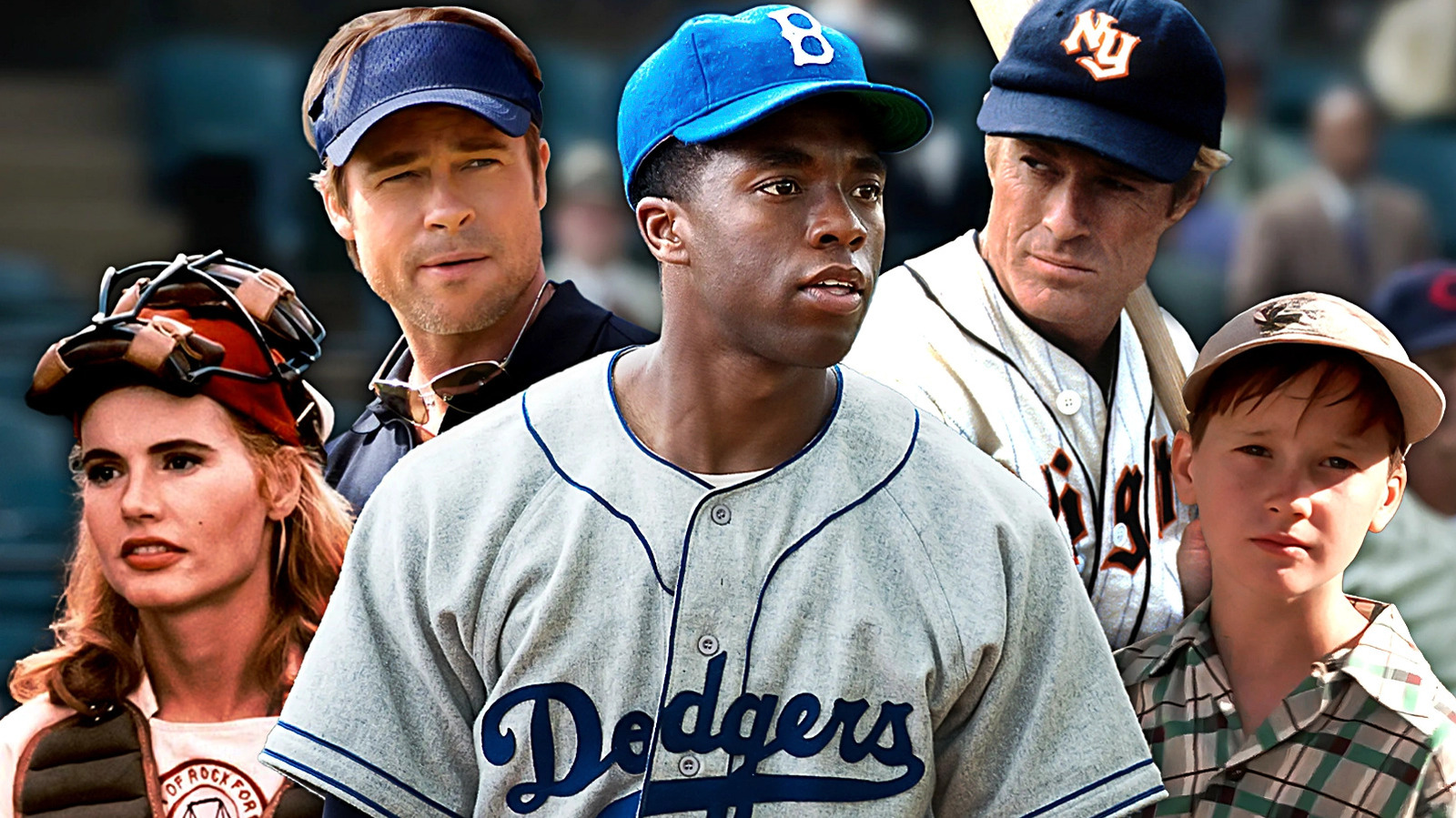
by admin | Jun 30, 2025 | TV & Beyond Articles
One of the best sports movies ever made is a hidden gem criminally overlooked by the public — and it was released relatively recently. The 2024 indie movie “Eephus” provides a slice-of-life look at adult amateur baseball teams in New England that casually assembled every weekend for games in the ’90s. The movie revolves around two teams in small-town Massachusetts preparing for one last game before their field is replaced by a school. Both squads are manned by decidedly un-athletic misfits that bond over their mutual love of the game, which has become a community fixture.
There is a sense of existential acceptance throughout “Eephus” as these players come to terms with their long-standing weekend pastime coming to an end. Despite this, the teams play on because that’s what they know to do best, not particularly embittered by this abrupt conclusion, but recognizing it as a fact of life. Along the way, the players offer their own quirky humor, free of overt melodrama, as they indulge in their final game. Cozy and unassuming, “Eephus” is a quiet celebration of baseball and its role in a community.
14. Bang the Drum Slowly

Paramount Pictures
Just as Robert De Niro’s film career was taking off, one early critical success that he had was the 1973 sports drama “Bang the Drum Slowly.” De Niro plays major league catcher Bruce Pearson, who is ridiculed by his teammates for his low intellectual prowess. Pearson befriends the team’s star pitcher Henry Wiggen (Michael Moriarty), later confiding in him that he has received a terminal cancer diagnosis. Wiggen and Pearson keep this a secret from the rest of the team as their friendship deepens in the face of Pearson’s impending demise.
Given its subject matter, “Bang the Drum Slowly” feels like a spiritual successor to the 1971 television movie “Brian’s Song,” albeit under a different sport. The camaraderie between Wiggen and Pearson is the emotional core of the movie and De Niro and Moriarty play that deep friendship well. This keeps the movie from veering into outright melodrama, with a surprising amount of humor present throughout the story. A strong early cinematic performance from De Niro, “Bang the Drum Slowly” blends comedy and tragedy to great effect.
13. The Battered Bastards of Baseball

Netflix
Any sporting organization is going to see its fair share of misfits and this is especially true of minor league baseball leagues. The 2014 Netflix original documentary “The Battered Bastards of Baseball” chronicles the Portland Mavericks, a minor league team unaffiliated with any parent team from the major leagues. Recounting the rebellious outfit’s heyday from 1973 to 1977, the team becomes an endearing underdog squad owned by actor Bing Russell. The documentary also reveals how a brutal injury forced Kurt Russell (seen above) to start acting full-time, after his own stint playing for the team.
“The Battered Bastards of Baseball” stands as a great true underdog story, one that shines a light on an obscure part of the Russell family history. The major leagues weren’t overly fond of the devil-may-care indie team, with the documentary showing how they dealt with that adversity head-on. Of course, there’s plenty of freewheeling fun along the way, as the Mavericks enjoy the baseball lifestyle by their own rules. A fantastic documentary, “The Battered Bastards of Baseball” is interestingly the only Kurt Russell movie that has a perfect Rotten Tomatoes score.
12. Everybody Wants Some!!

Paramount Pictures
After helming the seminal ’90s coming-of-age movie “Dazed and Confused,” filmmaker Richard Linklater returned to the genre with 2016’s “Everybody Wants Some!!” This time, Linklater focused on college baseball players at Texas school in 1980 who arrive before classes for training camp. Freshman pitcher Jake Bradford (Blake Jenner) moves into the team’s house off-campus where he is greeted by a whirlwind of drunken parties. Between the string of shindigs and baseball practice, Jake finds time to romance his classmate Beverly (Zoey Deutch) as he finds himself in the college scene.
There’s a playfulness to “Everybody Wants Some!!,” with Linklater evoking a debauched college environment through youthful eyes. Baseball is the thing that brings these seemingly disparate kids together, and it’s clear that they still love playing it. And long before he became America’s latest heartthrob, this stands as one of Glen Powell’s best movies to date, with Powell playing the irascible upperclassman Finnegan. A feel-good movie about a bunch of college rascals, “Everybody Wants Some!!” brings some mischievous fun to college baseball.
11. Eight Men Out

Orion Pictures
One incident that haunted professional baseball for decades is the 1919 Black Sox Scandal that saw eight White Sox players collude with gamblers to intentionally throw the World Series. When the conspiracy was exposed the following year, the players involved were banned from baseball for the rest of their lives. This historical event is dramatized in the 1988 sports movie “Eight Men Out,” written and directed by filmmaker John Sayles. The movie delves into the motivations behind the players involved in the championship game fixing, including their animosity against the team’s manipulative owner Charles Comiskey (Clifton James).
A more intimate look at a young impressionable team at a moral crossroads, “Eight Men Out” is elevated by its cast. John Cusack and David Strathairn give earnest performances as the wide-eyed Buck Weaver and the jaded Eddie Cicotte, respectively, two players caught up in the fix. Given the subject matter, the movie makes for a great unintentional companion piece to “Field of Dreams,” which deals with the scandal’s emotional fallout. A labor of love for the major creative parties involved, “Eight Men Out” provides a clear-eyed look at one of the sports’ most controversial moments.
10. 42

Warner Bros.
Before he was the Marvel Cinematic Universe’s Black Panther, the late Chadwick Boseman first turned heads in Hollywood with his portrayal of Jackie Robinson in “42.” The depicts Robinson being recruited by the Brooklyn Dodgers in the ’40s, officially starting with the team in 1947 and breaking up the league’s strict racial segregation. Robinson faces aggressive persecution every step of the way, with Dodgers’ owner Branch Rickey (Harrison Ford) reminding him his detractors are trying to provoke a response. Robinson’s enduring dignity and excellence on the field not only inspires his team but leads to the wider desegregation of the league.
Written and directed by filmmaker Brian Helgeland, “42” is a sports biopic that showcases how brave and noble Robinson was in the face of constant adversity. Though the movie doesn’t throw any major curveballs from the established genre formula, it incorporates them with a well-honed approach. A relative unknown at the time, Boseman makes the Robinson all his own, capturing the humanity within the iconic historical figure. A well-crafted biopic that marries its historical story with gripping sports scenes, “42” was an early sign of great things to come from Boseman.
9. A League of Their Own

Columbia Pictures
With so many professional athletes serving in the military during World War II, organizations like the All-American Girls Professional Baseball League kept the sport alive in the United States. The 1992 dramedy “A League of Their Own” explores this overlooked aspect of baseball history, chronicling the league’s formation and following the saga of the Rockford Peaches. Married softball player Dottie Hinson (Geena Davis) and her sister Kit (Lori Petty) are recruited, with Dottie playing with boozy manager Jimmy Dugan (Tom Hanks). A growing rivalry between Dottie and Kit culminates in their teams facing off in the league’s World Series.
While led by Davis and Hanks, what makes “A League of Their Own” work is that it’s a true ensemble effort, with everyone as the hero of their own story. The movie thoroughly embraces its period piece setting, fueled by sentimentality and a constant light-hearted charm. Two short-lived television adaptations of the movie have since been attempted, airing in 1993 and 2020 respectively. But at the end of the day, “A League of Their Own” is the ultimate sports movie, something its television spin-offs never quite recaptured.
8. The Bad News Bears (1976)

Paramount Pictures
By the ’70s, Walter Matthau had become America’s favorite cinematic curmudgeon, starring in hit moves like “The Odd Couple” and “Kotch.” The perfect showcase for Matthau’s crowd-pleasing blend of grumpy and heartwarming qualities is in the original 1976 version of “The Bad New Bears.” Matthau stars as alcoholic former minor league pitcher Morris Buttermaker, who accepts a secret cash offer to coach a wealthy parent’s little league team. Buttermaker grows to begrudgingly appreciate his impressionable squad, especially his former protege and surrogate daughter figure Amanda Whurlitzer (Tatum O’Neal), the team’s star pitcher.
Just like Matthau’s character, there is a lot of heart to “The Bad News Bears” once you get past its comedically gruff exterior. O’Neal more than holds her own against Matthau as the profane Amanda, with their rapport carrying the movie. But beyond the laughs, the film is also an indictment of how much competitive parents push their children in something as seemingly escapist as little league sports. Lovingly acerbic, “The Bad News Bears” masterfully balances being simultaneously vulgar and sweet as it skewers little league baseball.
7. The Pride of the Yankees

RKO Pictures
One of the biggest legends in the New York Yankees’ golden era in the 1920s and 1930s was first baseman Lou Gehrig. Gehrig voluntarily retired at the age of 36 after he was diagnosed with what has become known as ALS, dying just two years later. The life and times of Gehrig were dramatized for the 1942 movie “The Pride of the Yankees,” with Gary Cooper playing the athlete. Several of Gehrig’s Yankees teammates appear in the movie as themselves, most notably Babe Ruth, who had been retired as a player for several years.
There were sports movies before “The Pride of the Yankees,” but none that got even close to the level of quality as the baseball biopic. The movie transcends the sport to focus on the man who became an indelible part of the Yankees’ legacy, from his romance with his wife to his life-ending tragedy. That movie actually features Gehrig’s peers playing themselves is just icing on the cake of authenticity. Gary Cooper’s genre-defining sports movie set the template for sports biopics to come and still holds up over 80 years later.
6. Major League

Paramount Pictures
If “The Bad News Bears” takes a hilariously politically incorrect and profane look at baseball for little leaguers, “Major League” does it for the pros. The 1989 sports comedy has the Cleveland Indians’ new owner (Margaret Whitton) plan to deliberately sabotage the team, so she can exploit an escape clause to relocate it to Miami. This scheme involves assembling a roster of rookies and washed-up veterans to tank the team’s performance and cause audience attendance to plummet. Once the team realizes that they’re being played, they band together to begin winning and drive attendance up to thwart these plans.
Just like their characters, the ensemble cast to “Major League” doesn’t feel like it could gel at first, until everything clicks into place and the movie starts firing on all cylinders. While leads Tom Berenger and Charlie Sheen are both solid, it’s the late, great Bob Uecker as the team’s surly announcer that steals the show. The movie’s baseball sequences are also engagingly staged, giving a real sense of stakes. Launching its own trilogy, “Major League” is still one of the best sports comedies around.
5. The Sandlot

20th Century Studios
A lot of enduring love for baseball comes from that initial sense of childhood wonder as people are first introduced to the sport, either as players or spectators. One movie that celebrates that distinction particularly well is the 1993 coming-of-age comedy “The Sandlot,” directed, co-written, and narrated by David Mickey Evans. Set in the summer of 1962, the movie follows introverted Scotty Smalls (Tom Guiry) as he moves with his family to Southern California. Scotty befriends the local kids and joins their pickup baseball games, leading to misadventures that change their lives forever.
There’s an innocent charm to “The Sandlot” that continues to hold up over 30 years after its initial release. The ensemble cast gels well together, ribbing and supporting each other in equal measure, and the movie captures a point in life when everything just felt bigger. This is evidenced in larger-than-life vignettes, including a memorable Independence Day game and the climactic attempt to retrieve a priceless baseball. Easily one of the best ’90s kids movies, regardless of sports connection, “The Sandlot” is an enduring classic.
4. Bull Durham

Columbia Pictures
Filmmaker Ron Shelton launched a career of successful sports movies starting with 1988’s “Bull Durham,” which was also his first collaboration with Kevin Costner. Costner plays veteran minor league catcher Crash Davis who mentors his team’s hotshot new pitcher Nuke Laloosh (Tim Robbins). As Crash shows Nuke the ropes, both men enter a flirtatious relationship with local baseball groupie Annie Savoy (Susan Sarandon) who takes Nuke under her wing in her own way. As Nuke prepares to transition to the majors based on Crash’s tutelage, Annie and Crash decide to strike up a romance of their own.
“Bull Durham” endured quite the road to get made with the movie rejected by nearly every studio as it made the rounds in the ’80s. On paper, that trepidation makes sense, given its uneven blend of comedy, drama, and romance, but the end result balances those elements seamlessly. It’s also worth mentioning that “Bull Durham” is a deceptively erotic movie, with Susan Sarandon’s performance scarring her children at a later screening. Sensuality aside, “Bull Durham” is a superbly crafted dramedy that explores coming-of-age at multiple ages against the backdrop of minor league baseball.
3. Moneyball

Sony Pictures Releasing
There are plenty of movies that center around playing or coaching baseball, but 2011’s “Moneyball” is a film about managing baseball. Based on the 2003 book by Michael Lewis, the movie details how the Oakland Athletics fielded a competitive team despite its limited financial resources. Frustrated general manager Billy Beane (Brad Pitt) recruits advisor Peter Brand (Jonah Hill), using Brand’s sabermetric analysis to build the Athletics’ roster. Though baseball purists balk at the strategy and prepare to crucify Beane for ditching the sport’s traditions, the unlikely squad begins to steadily win.
Brad Pitt single-handedly saved “Moneyball,” in more ways than one, with Beane progressing from a cynic over the sport to someone who has their love of it reignited. But the movie is also sharply written and staged, with a memorable score composed by Mychael Danna that soars as the Athletics reverse their fortunes. The change of perspective makes the movie feel fresh too, exploring Beane’s management style, including how he works with the team and its manager Art Howe (Philip Seymour Hoffman). As inspiring as the true story behind it, “Moneyball” takes familiar baseball movie elements and breathes new life into them.
2. Field of Dreams

Universal Pictures
The 1982 novel “Shoeless Joe” by W.P. Kinsella was adapted into the hit sports fantasy “Field of Dreams” in 1988, written and directed by Phil Alden Robinson. Kevin Costner stars as Ray Kinsella, who lives on a struggling corn farm with his wife Annie (Amy Madigan) and their young daughter. As Ray remains haunted by his estranged relationship with his late father, he is urged by a strange voice in the cornfield to build a baseball field. Upon doing so, he is visited by the ghosts of classic baseball players, led by Shoeless Joe Jackson (Ray Liotta), leading to a cross-country adventure.
All of “Field of Dreams” hinges on a leap of faith, defying all logic in an emotionally healing fantasy story. Baseball is what brings everyone in the movie together, including and especially fathers and sons, but a happy ending here never revolves around a game. Instead, this is a story about reconciliation and second chances, something that the magic of baseball can provide. A project that affected its cast as they knew it was going to be a classic, “Field of Dreams” celebrates baseball marking the time on a broader and intimate level.
1. The Natural

TriStar Pictures
If there’s one movie that captures the timeless magic of baseball and still continues to inspire beyond its established sports formula, it’s “The Natural.” An adaptation of Bernard Malamud’s 1952 novel of the same name, the 1984 movie stars Robert Redford as baseball prodigy Roy Hobbs in the early 20th century. After enduring a grievous wound at the start of his career, Hobbs returns to the game 16 years later, no less gifted even as an older man. The fate of the team hinges on Hobbs’ performance as the team’s shady owner (Robert Prosky) looks to gain full control if they fail to win the pennant.
From its soaring score composed by Randy Newman to an all-around stellar ensemble cast around Redford, every element in “The Natural” works perfectly. Without being an outright fantasy story, the movie is cinematic myth-making cementing Roy Hobbs as the greatest to ever play the game, despite his life-threatening wounds. Anchoring the whole thing is an earnestly heartfelt performance from its star, with “The Natural” as one of Robert Redford’s best movies. A dream-like quality that enhances the story’s many magical moments, “The Natural” is pure sports movie bliss that beautifully celebrates the legacy and love of baseball.
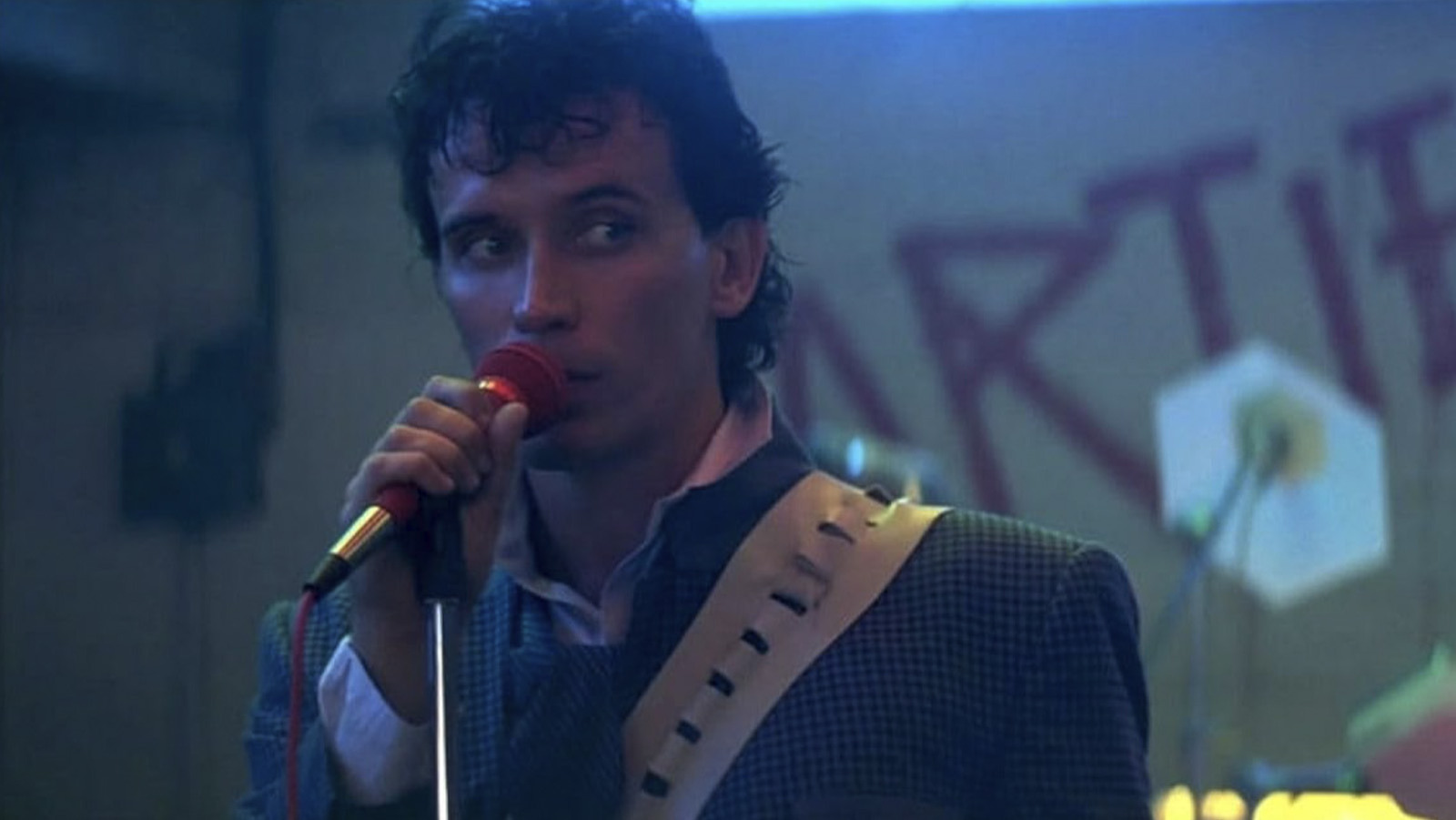
by admin | Jun 30, 2025 | TV & Beyond Articles
check it out for free on Pluto TV.
Buckaroo Banzai’s journey to the big screen was almost as convoluted as the movie
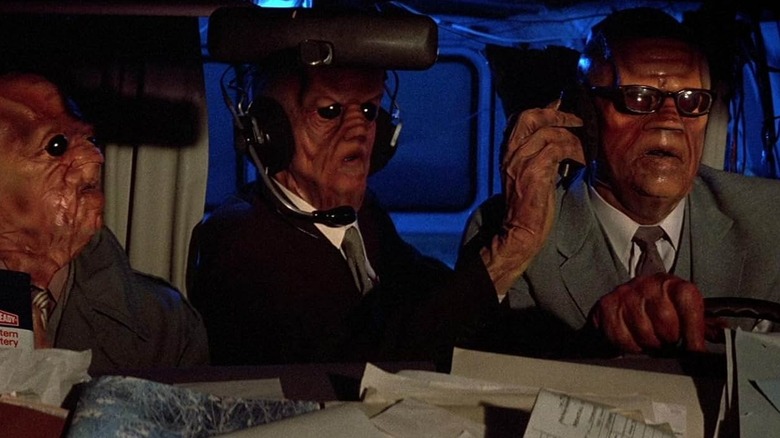
20th Century Studios
Getting “The Adventures of Buckaroo Banzai” to the screen was a long and complicated process, not helped by its writer’s mercurial approach to putting a screenplay together. Initially paid $1,500 by W.D. Richter and his wife to pen a script, Earl Mac Rauch enthusiastically launched himself into one story about the hero (initially called “Buckaroo Bandy”) before abandoning it and starting all over again with a different concept. By his own admission, Rauch dumped around 12 screenplays featuring wacky ideas, including a giant robot and a box of Hitler’s cigars.
In the meantime, Richter was building up his reputation in Hollywood, most notably writing the excellent 1978 version of “Invasion of the Body Snatchers” (one sci-fi remake that is better than the original) and receiving an Oscar nod for his “Brubaker” screenplay. In 1979, Richter teamed up with Neil Canton (who would later produce the “Back to the Future” trilogy) to form their own production company. Richter decided that “Buckaroo Banzai” would be the perfect project for him to make his debut as a director, but the pair realized they would need a completed screenplay if they had any chance of a studio stumping up the cash to relative unknowns. That meant getting Rauch back behind the typewriter and actually finishing something.
That something was a new Buckaroo Banzai adventure called “The Lepers from Saturn,” and it took Rauch until 1982 to complete a script. That was just in time for the Writers’ Guild of America to call a strike and shut down Hollywood. Eventually, the project was funded by 20th Century Fox, who handed Richter a handsome initial budget of $12 million. It would still take Rauch three more drafts before cameras eventually rolled with a workable screenplay, not to mention a 300-page tome called “The Essential Buckaroo” as a kind of reference book containing all the lore that Rauch had come up with previously. “Buckaroo Banzai” was finally a go picture, but the production was hampered by the presence of producer David Begelman, who didn’t get it at all and continually interfered (Richter referred to him as “our enemy for the entire movie”). To Begelman’s credit, however, he was responsible for the joyous end credits sequence with Buckaroo and his friends walking along the L.A. River.
What makes Buckaroo Banzai so special?
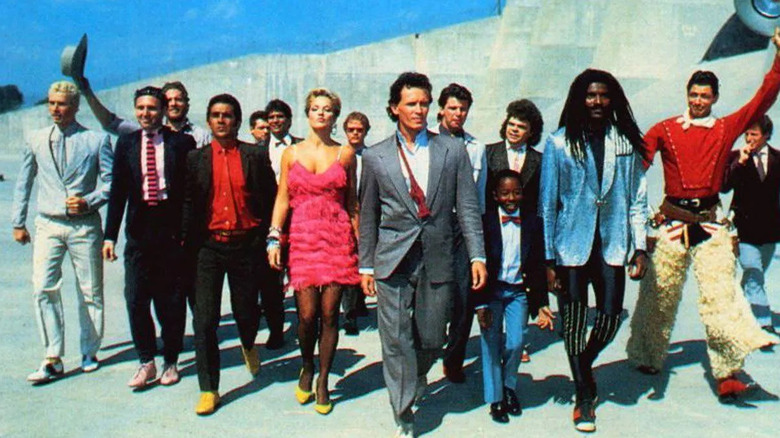
20th Century Studios
A synopsis for “The Adventures of Buckaroo Banzai” doesn’t do full justice to the experience of actually watching it. On the surface, it’s an offbeat sci-fi comedy with the familiar grain of a mid-budget, mid-’80s genre movie, but it has an attitude and a style that sets it totally apart. Key to the film’s left field vibe is Peter Weller’s performance as Buckaroo Banzai. Weller’s approach to finding his character was suitably unconventional, drawing from the diverse likes of Elia Kazan, Albert Einstein, Jacques Cousteau, Leonardo da Vinci, and Adam Ant as inspirations.
Weller’s unflappable Zen mystique as Banzai (“No matter where you go, there you are”) is wonderfully contrasted by John Lithgow’s utterly bonkers performance as Dr. Emilio Lizardo, who goes big with his outrageous Italian accent and bizarre mannerisms. They are supported by a colorful supporting cast including Clancy Brown and Lewis Smith as members of the Hong Kong Cavaliers; Ellen Barkin as Buckaroo’s quirky love interest; and Christopher Lloyd as an alien going by the name of John Bigbooté (pronounced “Big Booty”), because all the Red Lectroids are called John. Last but not least, Jeff Goldblum is another neurosurgeon who likes to be called “New Jersey” and wears a cowboy outfit. His quirky acting technique fits perfectly here, and “Buckaroo Banzai” definitely goes down as one of the best Jeff Goldblum movies.
“The Adventures of Buckaroo Banzai” revels in its own weirdness and the peculiar tone makes it totally understandable why some viewers simply wouldn’t get it. The film takes itself at least semi-seriously (there aren’t many outright jokes or winks to the camera), but a lot of the goofier elements play like a live-action cartoon — indeed, I was surprised to find out that it wasn’t based on a comic book when I first saw it. If the film has a fault, it’s that it gets a little repetitive in the last act when it morphs into a slightly more conventional sci-fi action movie. But the first hour is an absolute hoot as we get immersed in the wild self-contained world of Banzai and his pals and it’s a super-stylish flick, too, championed by Los Angeles Magazine as “the moment geeks became cool.” If that sounds like your jam, you can catch up with it now on Pluto TV.
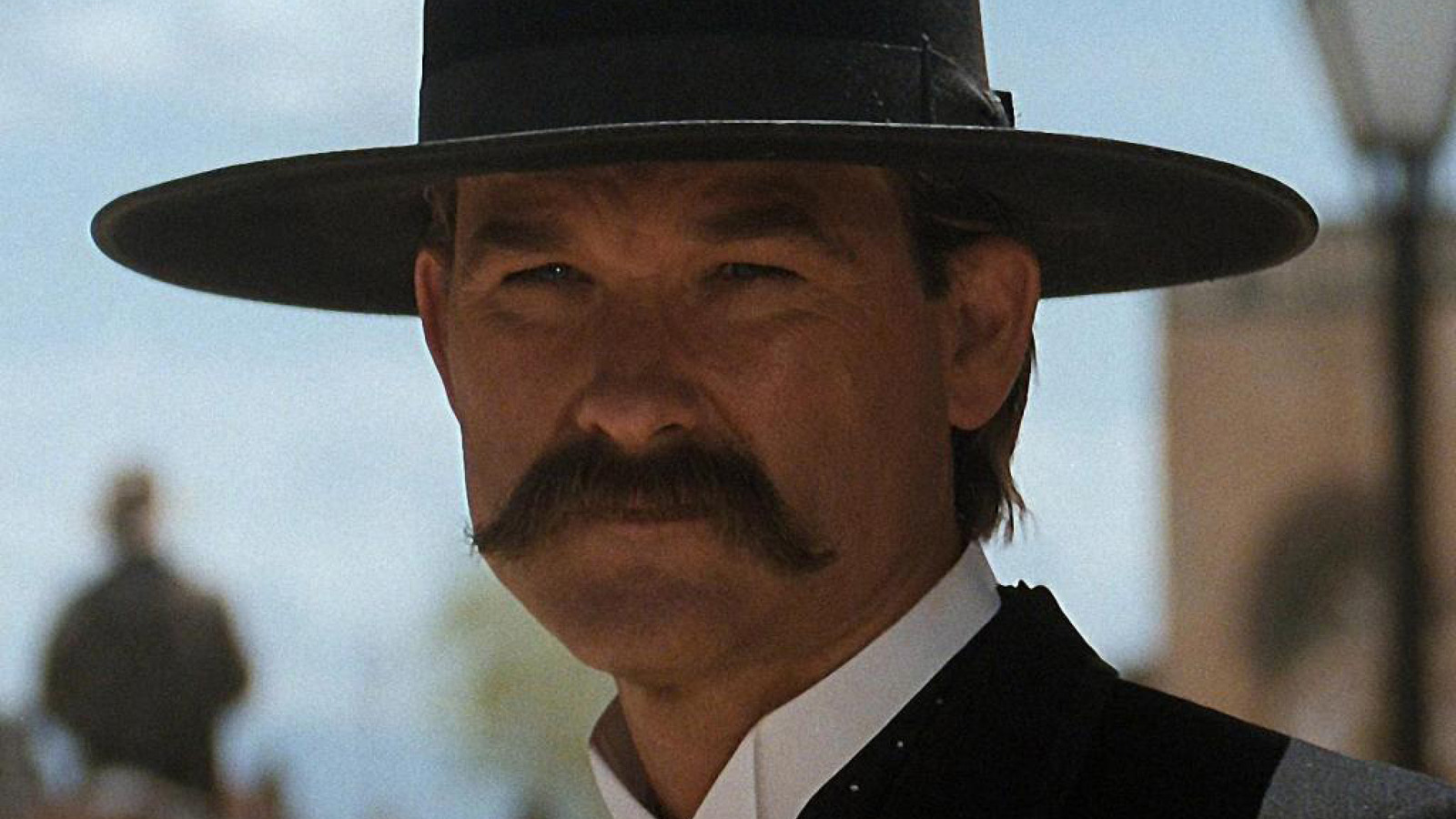
by admin | Jun 30, 2025 | TV & Beyond Articles
one of Eastwood’s best films as both an actor and a director, and there really isn’t another film like it that fully digs into its themes. But there is another Western that is just as fantastic, and it stars another Western movie legend.
If there’s another actor as tied to the Western genre as Eastwood, it’s Kurt Russell, who has starred in a whole bunch of fantastic Westerns over the years. And one of the best of the best is “Tombstone,” which stars Russell as real-life lawman Wyatt Earp. It’s a terrific drama with absolutely stunning cinematography, featuring views of gorgeous Arizona vistas, and it does deal with some of the same difficult life-or-death brutality as “Unforgiven,” even if it’s a bit more of an adventure than Eastwood’s grim classic. After all, “Tombstone” is based on a true story (even if it’s not entirely historically accurate), so it has to reckon with some of the more unpleasant elements of the time period.
Hulu’s your huckleberry if you want to watch Tombstone
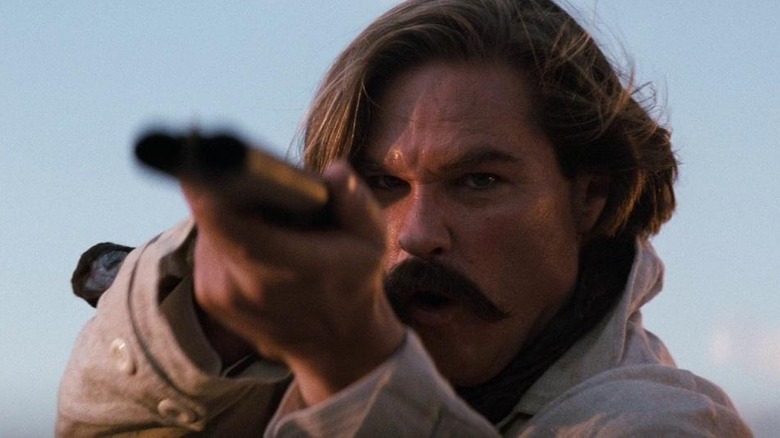
Buena Vista Pictures Distribution
“Tombstone,” which stars Val Kilmer, Sam Elliott, Bill Paxton, Michael Biehn, and more in addition to Russell, is a rip-roaring time at the movies that features some of the most quotable lines in the whole genre. Like “Unforgiven,” it deals with how people handle a harsh, almost lawless world, where violence seems to regularly be the only form of communication. As Wyatt Earp, his brothers, and his friend Doc Holliday (Kilmer) try to deal with the vicious outlaws that call themselves The Cowboys, it becomes a brutal and bloody battle to the death for many of them. Not every protagonist who starts “Tombstone” survives to the end, and their deaths make “Tombstone” more poignant and resonant.
Fans of “Unforgiven” who want to check out “Tombstone” for the first time or the thousandth time can do so on Hulu, Disney+, and Peacock. Sure, “Tombstone” might not tackle Western revisionism the same as “Unforgiven” and occasionally leans into its John Ford, classic Hollywood influences, but it’s still one of the best Westerns of all time and is a perfect pairing with Eastwood’s incredible film. (“Unforgiven” currently isn’t available to stream anywhere unless you want to pay to rent it, though it’s probably worth it for this wild west double feature.) Russell’s second-best Western, “The Hateful Eight,” is available on Netflix, if you want to really have a perfect movie marathon of post-classic Westerns. Just be careful when checking out “Bone Tomahawk,” also on Netflix, unless you’re prepared to see something in the genre take a truly brutal new turn. Now that’s a subversive Western.
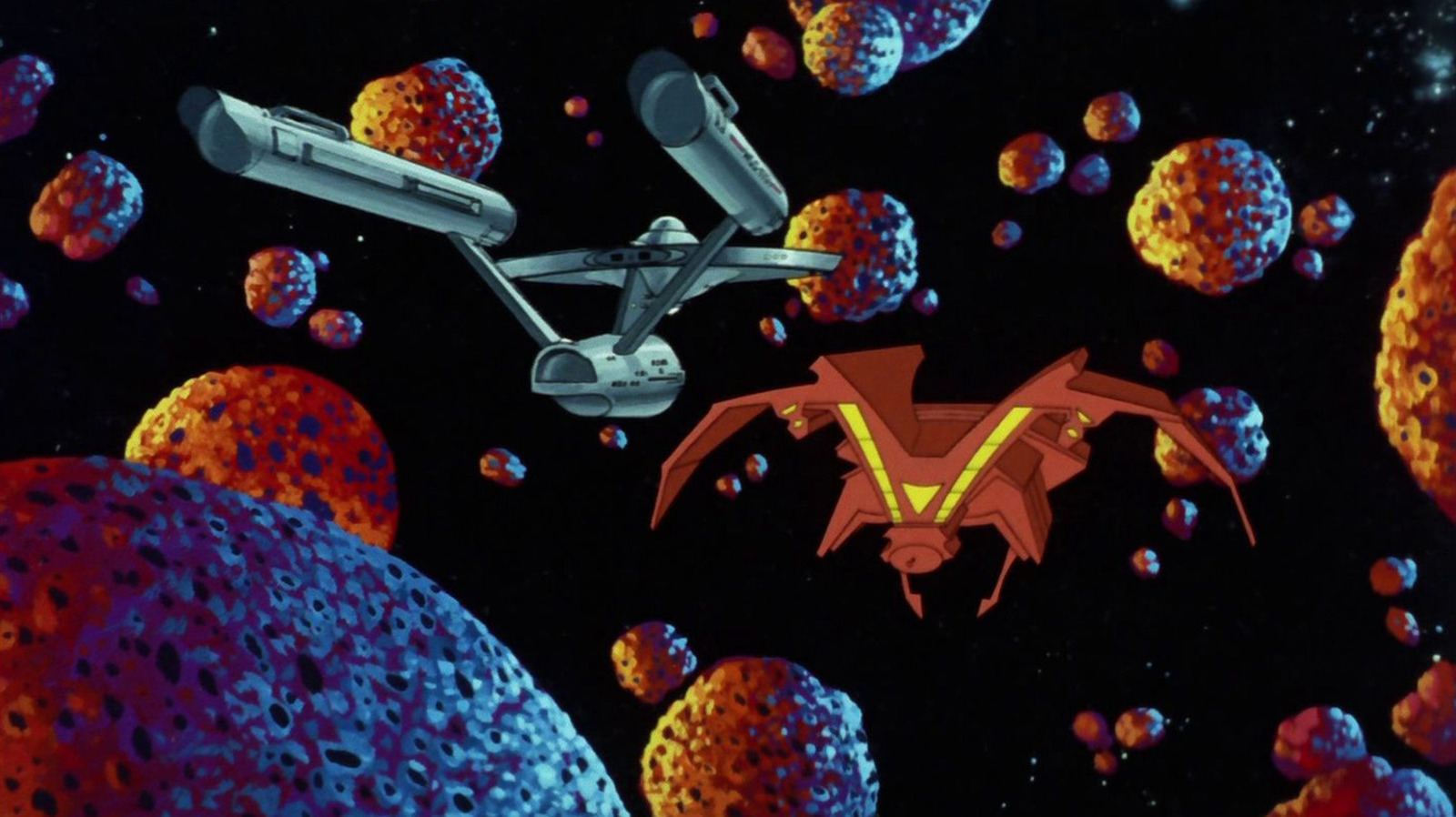
by admin | Jun 30, 2025 | TV & Beyond Articles
“Star Trek: Lower Decks” was a 30-minute animated sitcom version of “Star Trek,” set shortly after the events of “Star Trek: Voyager.” That show lasted a successful five seasons before coming to a close in 2024. While “Lower Decks” was in production, Paramount also launched “Star Trek: Prodigy,” a CGI-animated series produced by Nickelodeon. That show was meant to be more kid-friendly than other “Star Trek” shows, and featured a cast of teenage characters. That show lasted two seasons, spread over 2021 and 2024.
As for the other two animated “Star Trek” shows, there may be some debate as to their taxonomy. The stop-gap anthology series “Short Treks” ran for two seasons from 2018 to 2020, and, as the title implies, was constructed of short, independent stories within the Trek universe. Two of the shorts in the show’s second season were animated, so that may count as an animated series unto itself. “Short Treks” then, in turn, gave birth to the all-animated series “Very Short Treks,” a new anthology series of brief, crass, non-canonical comedic cartoons. That series ran for five episodes in 2023.
How do these animated shows rank? Let us slip into our judge’s robes and make some tough calls.
5. Very Short Treks
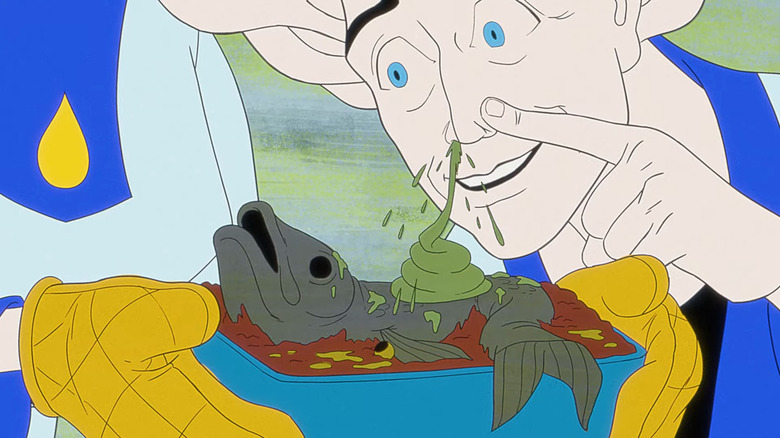
Paramount+
The “Very Short Treks” series was created by Casper Kelly, the mastermind behind “Stroker and Hoop,” “Too Many Cooks,” and the Cheddar Goblin sequence from “Mandy.” Kelly clearly has a twisted sense of humor, and handing him “Star Trek” is like handing a handkerchief to a hay fever sufferer and then asking them not to get any mucous on it. Of course, Kelly created one of the silliest — and dumbest — “Star Trek” projects to date, mocking the franchise relentlessly, and doing so with the participation of many of the show’s various cast members.
The idea behind “Short Treks” was to pay homage to “Star Trek: The Animated Series,” which turned 50 in 2023. Kelly animated all his shorts in the style of “Animated Series,” which was produced by Lou Scheimer’s famous Filmation studio back in the day. Kelly, however, was clearly not interested in traditional “Star Trek” stories about exploration and diplomacy, nor was he interested in making small character studies of well-known Starfleet characters. Instead, he created aliens with underwear heads. He made a species that considers it polite to wipe boogers on visiting Federation officers. He created a character named Ass Face.
“Star Trek” can certainly stand some irreverence, as its main characters tend to be stuffy, ultra-formal, uniform-wearing diplomats. And goodness knows I love a good booger joke or Ass Face gag. But I don’t know what the heck this is. It knows enough about “Star Trek” to make inside jokes, but it also seems to hate the series. One might say that “Very Short Treks” is all in good fun, but that would only be true if it were fun.
4. Short Treks
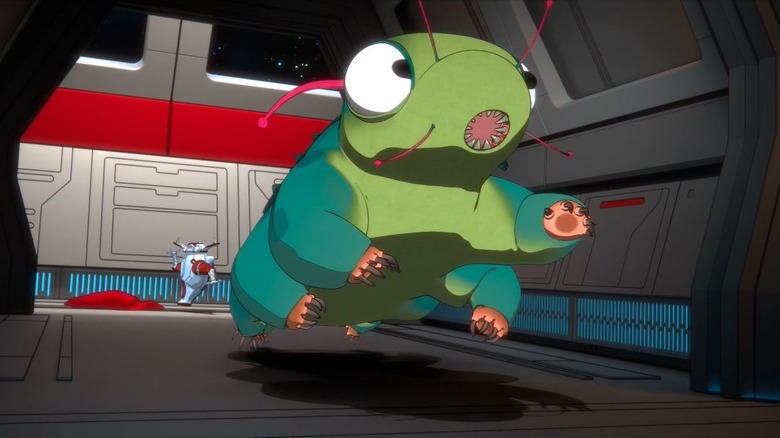
Paramount+
When “Short Treks” debuted in October 2018, it seemed to have a mercenary function. At the time, the first season of “Star Trek: Discovery” had just come to an end, and its planned second season wouldn’t debut until the following January. CBS All Access (not yet named Paramount+) clearly wanted to keep subscribers on the hook until then, so the network seemingly rushed “Short Treks” into production, releasing one short every few weeks, just far apart enough to keep the monthly subscription fees renewing. The shorts were clearly very low-concept, and most of them were filmed on mostly empty “Discovery” sets, usually with only a few actors on hand.
Few of the shorts are standouts, and they didn’t get truly creative until later in the show’s run. In the second season, “Short Treks” ran its first animated episode, called “Ephraim and Dot,” directed by noted composer Michael Giacchino. The short followed the adventures of Ephraim, an outsize spatial tardigrade, as it infiltrated the tiny tunnels in the hull of the U.S.S. Enterprise. It was pursued by a repair drone, Dot, that aimed to eject it. Thanks to a few glimpses through portals, Ephraim was inside the Enterprise during the events of “Star Trek II: The Wrath of Khan” and “Star Trek III: The Search for Spock.”
The second animated episode of “Short Treks” was called “The Girl Who Made the Stars,” and was directed by Trek regular Olatunde Osunsanmi. This one was about a young Michael Burnham (the main character from “Discovery”) listening to an old African folk tale told by her father. It has very little to do with “Star Trek” and is only okay.
Indeed, most of “Short Treks” is only okay. Despite its fitful moments of ambition, it always felt a little mercenary, done for financial reasons instead of creative ones. It never had the thrill of something like “Liquid Television,” and never added importantly to Trek canon. You can skip it.
3. Star Trek: Prodigy
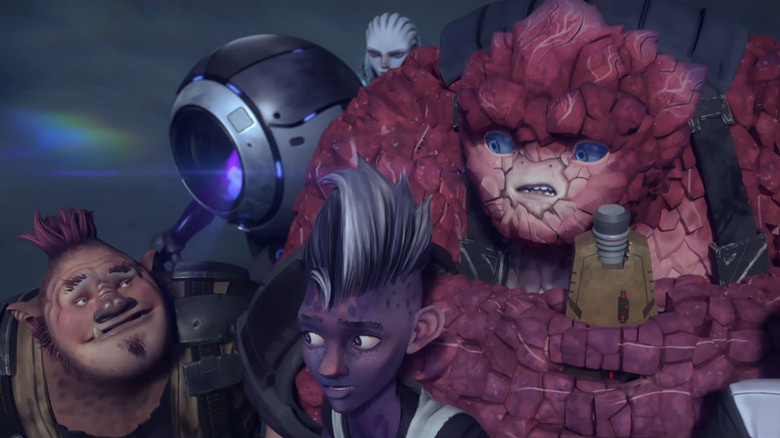
Paramount+
The beleaguered “Star Trek: Prodigy” was infamously canceled while its second season was in production, and unceremoniously dropped from Paramount+ altogether. The show was eventually picked up by Netflix, which aired its second season, but many Trekkies wondered why “Prodigy” warranted such harsh treatment. Was it the CGI animation? Was it because it was aired by the kid-friendly Nickelodeon? Was it the elongated story arcs? It’s hard to say.
It could have been because “Prodigy” started out in a very non-“Star Trek” place. At the start of the series, the main characters — a group of runaway teenage slaves — had never heard of Starfleet before, and had never encountered a Starfleet vessel. In the first few episodes, though, they find an abandoned ship called the U.S.S. Protostar, board it, and are instructed on how to use it by a hologram of Captain Janeway (Kate Mulgrew) of the U.S.S. Voyager. Despite the “Star Trek” iconography, the villains and action made “Prodigy” feel more like “Star Wars.”
Over the course of the series, however, the teen runaways — operating at the behest of the hologram Janeway — began to think of themselves as a crew that had to work together and employ their personal expertise in creative ways. By the end of the first season, they are all in Starfleet back on Earth, happy to have outgrown their dark past. “Star Trek,” the show argues, is better than “Star Wars.”
The second season was an even more elaborate story about time travel, retrieving the Protostar from villains, and reuniting many old, familiar faces. The show seems shaky at first, but quickly becomes pretty great. It didn’t deserve its fate.
2. Star Trek: The Animated Series
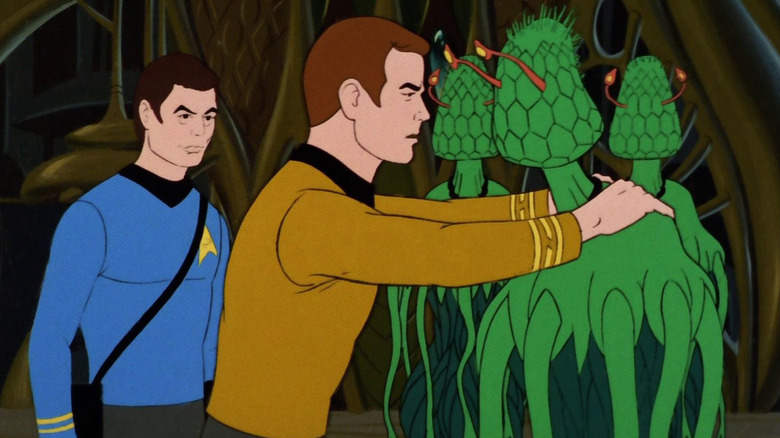
Paramount
If one were particularly daring, one could rank “Star Trek: The Animated Series” even higher than the original “Star Trek” series. Gene Roddenberry oversaw its creation, and many of the original show’s writers returned, this time unbound by the limits of live-action special effects. The show’s animated medium suddenly allowed “Star Trek” to become truly alien, featuring impossibly crafted starships, aliens with multiple limbs, underwater episodes, and a visit to the planet where Satan lives (yes, really). Also, because the series was only 30 minutes (as opposed to the original show’s one-hour time slot), the writers had to be more efficient in their storytelling, allowing plots to unfold more naturally and engagingly. Some may find the following statement heretical, but there was less extraneous character stuff.
The biggest problems with “Animated Series” are that it cut corners as often as possible, leaving a lot of the animation static and dull to look at. There are many extreme close-ups of characters’ faces where only their mouths are moving. Backgrounds are reused to a noticeable degree, and the exact same three music cues can be heard again and again and again. “Animated Series” could get creative with its aliens and visuals, but they didn’t really move around a lot.
Still, the writing was sharp, and many of the episodes dealt with heady themes and weird sci-fi ideas just like the original “Star Trek.” Its two seasons can likely count as the final two years in the U.S.S. Enterprise’s five-year mission — which only took eight years to complete.
1. Star Trek: Lower Decks
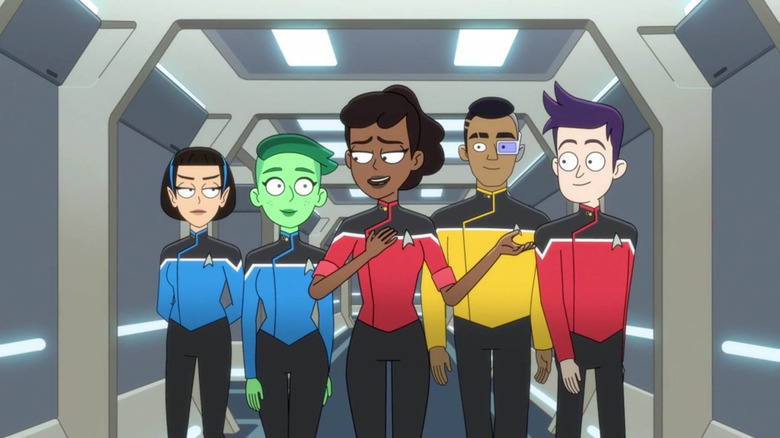
Paramount
Prior to its release in 2020, “Star Trek: Lower Decks” started out on the wrong foot. It sold itself as a comedy version of “Star Trek,” which wasn’t what Trekkies wanted at that time. You can’t undercut your own franchise’s seriousness from within, Paramount. That was the job of satirists. And indeed, the first episode of “Lower Decks” wasn’t very good, stressing a flippant, “Family Guy”-style sense of humor inside the “Star Trek” universe. Things didn’t bode well.
But then “Lower Decks” got to its feet and took off at a sprint. Its premise was novel, in that it was a series about the undervalued, lower-ranked officers on a starship, the ones who have all the crap jobs. Additionally, it took place on an unimportant Starfleet vessel, the U.S.S. Cerritos, that never took care of terribly important missions. “Star Trek” is a vast universe undergirded by a complex bureaucracy and a fleet of grunt workers, all of them required to make sure that a utopia can be achieved. For ensigns, though, it doesn’t always feel like a utopia. Sometimes it feels like you just have a s***ty job.
The brilliance of “Lower Decks” came, though, as its main characters began to grow. Ensign Beckett Mariner (Tawny Newsome) liked people to think of her as a rule-breaking firebrand, but she is eventually interrogated about her behavior, and she reveals some serious insecurities at work. The series develops naturally, all while remembering that these people have terrible jobs and screw up more often than “Next Generation” characters. It’s one of the best Treks of them all.
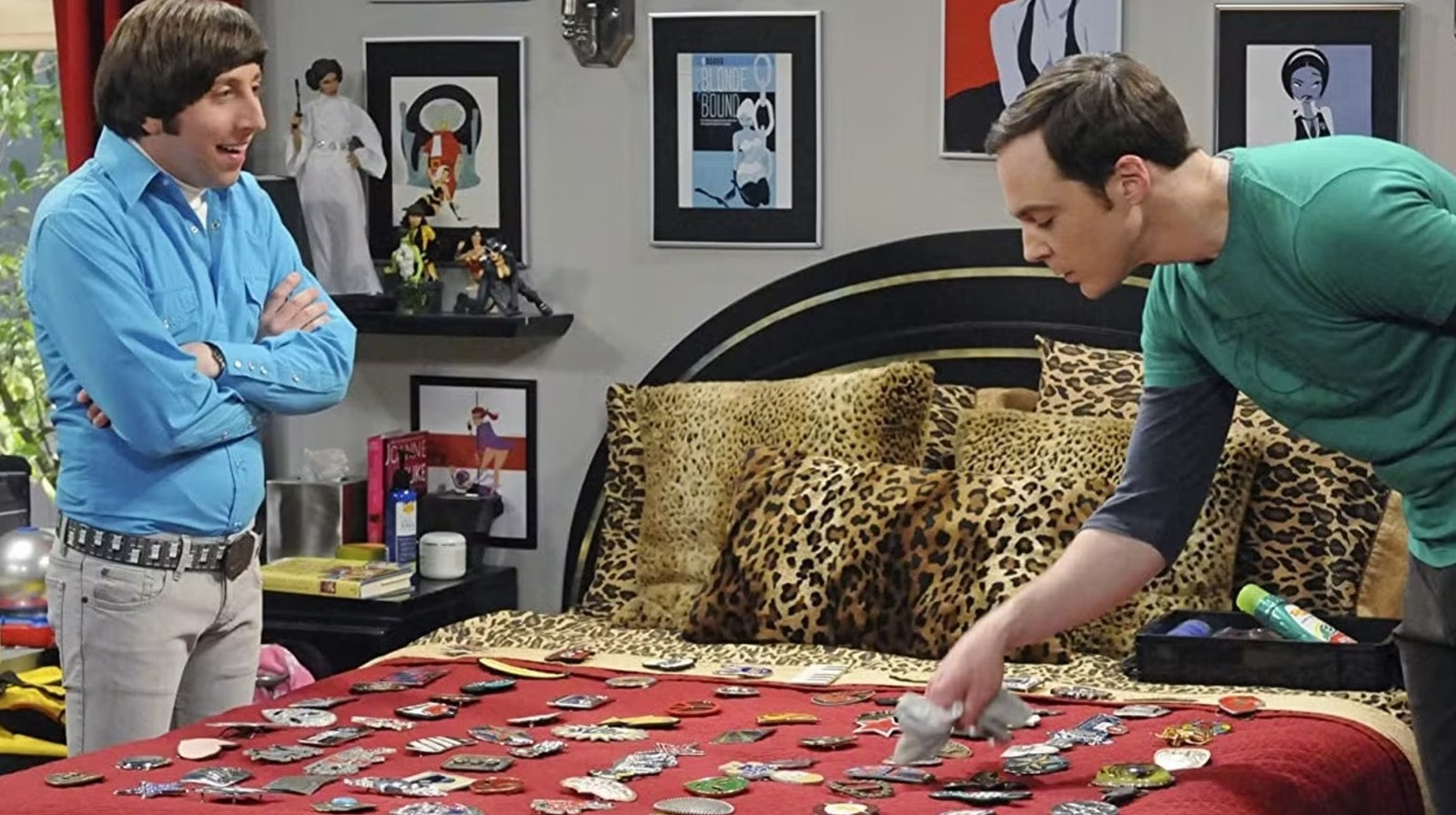
by admin | Jun 30, 2025 | TV & Beyond Articles
big flashy belt buckles, and tight pants. According to Jessica Radloff’s 2022 book “The Big Bang Theory: The Definitive, Inside Story of the Epic Hit Series,” Helberg and the show’s costume designer Mary Quigley worked extremely hard to create Howard’s unforgettable look, which did evolve over time … even if they encountered some strange technical issues at the start.
“Howard’s look was so bold that by the time I stepped out onstage wearing that outfit, I knew who this guy was,” Helberg recalled to Radloff before telling her that there were some amazing wardrobe malfunctions initially. “I think there were a couple pairs of jeans that I needed assistance with because they were so tight, particularly around the calf,” he said. “There was some buttering up of the thighs to get the pants off.” Heberg explained that in the pilot, Quigley had to make a unitard turtleneck because the clothes he wore were so small that he thought the turtleneck was probably for a six-year-old. Understandably, it didn’t stay tucked into his pants. “She had to sew on a diaper with snaps that would basically hold it in place and prevent it from coming undone,” he said.
Understandably, Helberg was a little worried about this intense process at first, but once he and Quigley figured it out, it was smooth sailing. “I thought if the show picked up, this is going to be a long go. But eventually we found some turtlenecks from the long and tall kids department and we could tuck them in,” the actor revealed. “And then to get all those sharp belt buckles so close to so many vulernable parts, plus the tight pants, and the pin on my turtleneck that would jam into my neck … I was always trying to get used to being smothered by my own wardrobe. But it was also negative twenty degrees in the studio when we would shoot, so it kind of went a long way.”
The Big Bang Theory’s costume designer Mary Quigley took inspiration from a Hollywood legend for Howard Wolowitz’s fashion sense

CBS
“Wolowitz’s look was certainly out there at the time,” Mary Quigley openly told Radloff in the book. “In the way he was written, he thought he was the suave one. If anyone had a closet full of different clothes, it was him.” The turtleneck Howard wore was his odd interpretation of how Clark Gable used to dress on hiatus between films, because as Quigley tells it, Gable used to wear white turtlenecks with a white sweater over his shoulders with white pleated pants. As for his colorful skinny jeans, the inspiration was pulled from the looks of The Beatles and The Monkees, which inspired Howard’s signature mop-top haircut. “He thinks he’s kind of a rock star.” (Quigley’s joke here is particularly funny when you consider that, at one point, the series almost cast a rock star as Howard’s absent father.) “Sometimes I’d get the jeans at Urban Outfitters, but I also dyed a lot of white jeans because I really wanted a saturated color,” Quigley concluded.
Still, there’s one specific piece of Howard’s costume that Quigley and Simon Helberg will never fully explain, and that’s Howard’s signature pin in the shape of a little alien. “The reason why Howard wore the alien pin is between Simon and I, and never to be told,” she told Radloff. “Simon and I swore we would never tell anyone why we did it. But there were lots of different alien pins because I had multiple colors depending on what he was wearing. And then the belt buckles were an example of his flashiness.”
When Radloff asked Helberg if the alien pin was there for a “fascinating reason or just silly,” Helberg coyly told her, “It may be a little bit of both. That’s all I’ll say.”
Howard’s style changed throughout The Big Bang Theory, except for one important feature

CBS
Throughout “The Big Bang Theory,” Howard evolves both as a character and just as a human being, particularly after he meets and settles down with the girl of his dreams, Bernadette Rostenkowski-Wolowitz (Melissa Rauch). According to executive producer and writer Steve Holland, the show made this clear in Howard’s costumes. “Howard basically wore the same thing, but we tried to pull away from the bright, bright colors,” Holland said of the character’s sartorial growth. “It was almost subtle enough that when we were doing an episode in season [11], if we showed a flashback, you could see him in those bright green lime pants, which we had kind of gotten away from… just small changes to let the character grow up a little bit.” Mary Quigley added, “He also began to wear slightly more muted plaid shirts instead of tight T-shirts over the turtlenecks.”
There was one thing that never changed about Howard, though, and that’s his helmet-style hair. “It was kind of unspoken that I would never do anything drastic to my hair, so it was always possible to achieve Howard’s look,” Simon Helberg said to Jessica Radloff. After acknowledging his co-star Kaley Cuoco’s surprising hair transformation before the season 9 premiere of “The Big Bang Theory,” Helberg continued, “But they never did tell us that we couldn’t do anything; it was just sort of expected that when we came back from summer hiatus, we had the same look. I’m sure I could have lobbed to change it, but I felt like it was very specific to him and he would never see any reason to upgrade that style. They flat-ironed it and sprayed it to keep it in place. It had a little movement, but I just wanted it to look like a solid block of hair that you’d find on an action figure or something.”
“The Big Bang Theory,” including all of Howard’s signature looks, is streaming on HBO Max now.
































